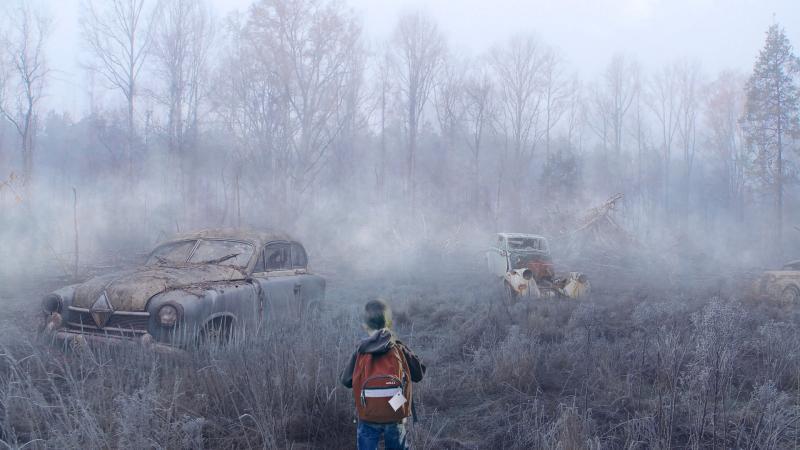Abstract: If humanity is a single tribe, then the only viable strategy in the current globalized and technologically advanced world is to behave, in its beautiful cultural diversity, as a unified tribe. In such a scenario, human civilization functioning would act as the spiritual dimension of a group survival strategy that unleashes all human beings’ capability to mutually defend their immediate and strategic self-interests by generating civilizational values. No matter how complex and controversial the social behavior of humans might be, the rational essence of the existential meaning of human civilization is to uninterruptedly secure the continuity and comprehensiveness of long-term favorable conditions for each human being to thrive.
Bottom-line-up-front: In the mode of tribal thinking, every new discovery or invention first becomes a weapon before eventually turning into a tool for a better life. Today’s anthropogenic existential risk dimensions were reached by such means. They are equally marked by highly sophisticated weapons such as nuclear, chemical, biological, Artificial Intelligence-managed lethal autonomous weapon systems and more which are capable of annihilating life on Earth.
Problem statement: How can the impact of human tribal structure be assessed as an anthropological fact of humankind developing existential threats?
So what?: Homo sapiens need to mobilize the potential of the human brain to invent new rational behaviors and overcome the self along with the destructive obsession with greed and world dominance that fuels a culture of violence.

Source: pixabay.com/Shazib Nadeem
The Crucial Correlation between the Political Vector and the Technology Vector
“The mission of the human spirit is to confront challenges that civilizationally stand orders higher than tribes of Homo sapiens fighting each other.”[1]
An existential risk is any potential change in the physical dimension of habitats belonging to Homo sapiens that is capable of rendering their survival as a biological species impossible. With humans being representatives of Homo sapiens themselves, the meaning of existential risk analysis points to the need to design a strategy for continuous survival.
Tribal Thinking
The story of Homo sapiens surviving over the last 300 000 years is a complex multidimensional process wherein a multiple-agency system interacts with its environment while changing all the time. This holds for both the environment and its components.
The basic component is an individual human agency with a brain in charge of decision-making processes. The human brain was defined by Nobel Prize winner Albert Szent-Gyorgyi as “… just another organ of survival, like fangs, or claws” that “does not search for truth, but for advantage, and … tries to make us accept as truth what only self-interest is allowing our thoughts to be dominated by our desires”[2]. It plays a key role in determining the interplay of both existential and behavioral aspects of individual human existence.
With invariable anthropological and biological characteristics, in the whole process of evolution, the human species has never had a viable strategy for individual survival. Humans can not run fast enough to escape a cheetah or kill a mammoth for dinner in a one-on-one fight.
The reality is that human beings are still surviving in the brutal adventure that is evolution, riding in the vehicle of group survival strategy.
In the early stages of human civilization, humans lived in scattered tribes and migrated around the continents. Their group survival strategy emerged naturally in its initial version, the tribal mode. Organizational structures within tribes have diversified while more and more sophisticated images and constructs have been continuously projected onto each particular tribe’s spiritual dimension of social realities such as tribal thinking. This being a functioning distinctive identity composed of myths, stories, legends, history studies, books, films, media and fake news together with others. The basic feature of tribal thinking is to integrate the individual self-interests of all its members into a new type of culturally colored entity which has the capacity to motivate their devotion to the collective interest of the tribe. Notably, it can go as fars as committing self-denial acts to the extent of self-sacrifice.
Later on, when transportation and communication tools enabled more intensive contacts, the concept of “tribal” gradually evolved into contemporary dimensions based not only on ethnicity but also on religion, nation-state, ideology and corporation identity among others. Despite the fact that nowadays, some of the newly emerged entities are composed of individuals scattered around the world and diffused with members belonging to other entities, the initial tribal version of group survival strategy has never evolved. All contemporary tribal structures, regardless of their visible diversity, still behave like the old primitive tribes.
Despite the fact that nowadays, some of the newly emerged entities are composed of individuals scattered around the world and diffused with members belonging to other entities, the initial tribal version of group survival strategy has never evolved.
Tribal thinking has several by-products, of which renowned scholar, Edward O. Wilson, pointed at the two most important game changing features: supremacy, and dominance.
“We’ve become genetically hard-wired to be tribal, to join groups (…) and, having joined, consider them superior to competing groups(…) Our groups — tribes, societies, nations — compete with one another for dominance, but as individuals, we also compete for survival and reproduction within groups via individual selection. Selfish individuals might beat altruistic ones, but groups of altruists beat groups of selfish people. The human condition is largely a product of the tension between the two impulses.”[3]
At times, a hypertrophied sense of supremacy evolved into self-proclaimed exceptionality, and based on inferiority, complex ambitions for dominance have ignited violent conflicts and wars in history. Such agendas of individual and tribal agencies became key factors in generating anthropogenic existential risks. Tribes are good, healthy structures that enable the colossal energy of competition to drive and advance humankind. What matters, however, are the rules of the competition/game.
The Technology Vector
While staying organized throughout all of history (in our tribal mode of living together), the characteristic that has never been affected by any of the numerous political conflicts, revolutions and wars is that humans never stopped improving their tools and technologies. By example, it is enough to have a look at today’s smartphones, spaceships, Ferrari cars, Maglev trains, submarines, skyscrapers and so on. The proud conclusion then becomes: We have done it! We are the best! No other biological species for the last four billion years has changed the planet at the scale and structural depth humans have, or created anything close to the scenery of our Anthropocene age.
However, what stays unnoticed is that as long as we exist in the tribal version of our survival strategy, every new technology that adds glamour to the objects of our advancing pride simultaneously builds up the power of self-destruction – a rather semi-dark background. The reason for this being that in the mode of tribal thinking, every new discovery or invention first becomes a weapon before transforming into a tool for a better life.
Today’s anthropogenic existential risk dimensions were arrived at in such a way, marked by highly sophisticated and mighty weapons, for instance, nuclear, chemical, biological, Artificial Intelligence-managed lethal autonomous weapon systems and others. All of which are capable of annihilating different forms of life on planet Earth.
The Existential Risk Function
The following chart represents the interdependence between the degree of existential risk and the correlation between the political and the technology vectors. High values of the degree of transition from Tribal to Civilizational thinking enable low risk of generating anthropogenic existential risks even when humanity functions in an intensive mode of incessant creating and utilizing new technologies in order to better human life. Low values of the degree of transition from Tribal to Civilizational thinking are characterizing high probability intertribal conflicts and imminent existential risks, and that values include humanity’s current point in time.

Source: Author
x — overall technological advancement
a — multiplication coefficient of military power dependence on technology
b — exponential base for the advancement of technology
c — exponential base for the political advancement from Tribal to Civilizational thinking
y — degree of transition from Tribal to Civilizational thinking
z — degree of Existential Risk
The point R on the technology axis marks the creation of nuclear weapons in the middle of the 20th century when Homo sapien species faced the existential problem of possible self-destruction for the first time in history.
The 0 — R interval on axis x – technological advancement – represents a seemingly exotic, from a philosophical, anthropological and axiological point of view phenomena that have materialized in the history of human civilization: the sub-technology cultures. Unlike Western culture which is functioning on a values system that includes technologies as major instrumental to achieve goals, the sub-technology cultures are functioning on value systems that exclude technological advance. These cultures have a stable “flat” technology vector. The Aboriginal communities in Australia, for example, have adopted and maintained for more than 60 000 years a lifestyle integrated into nature with strict social rules and beautiful fine art, amazing legends about the ocean life, the cosmic space and the surrounding flora and fauna. Aborigines, however, within those more than 60 000 years, never needed to invent anything more than the boomerang.
Another example would be the renowned Edo period in Japan (1603–1868), where masterpieces of art were created in a hierarchical and stable society, with the katana – the famous Japanese sword – being the most dreadful weapon in use. More instances are the Roma ethnic group or the Inuit. All the aforementioned cultures, if not disturbed by other cultures, could continue existing in their original mode of existence for many millions of years into the future without generating any anthropogenic existential risk.
Transition from the current Tribal Structure into Civilizational Thinking
“The saddest aspect of life right now is that science gathers knowledge faster than society gathers wisdom.”[4]
Anthropologically, the Human condition rests on the findings that “As revealed by the latest genetic studies… all humans alive today — from the inhabitants of Tierra del Fuego on the southern tip of the Americas to the Sherpa in the Himalayas and the mountain tribes of Papua New Guinea — came from one common ancestor”[5]. As such, to be efficient, the Homo sapiens group survival strategy does not have to be tribal. If humanity is one single tribe, then the only viable strategy in the current globalized and technologically advanced world is to behave, in its beautiful cultural diversity, as one tribe. That way, human civilization functioning transforms into the spiritual dimension of a group survival strategy that unleashes all human beings’ capability to mutually defend their immediate and strategic self-interests by generating civilizational values. No matter how complex and controversial the social behavior of humans might be, the rational essence of the existential meaning of human civilization is to uninterruptedly secure the continuity and the comprehensiveness of long-term favorable conditions for each individual human being to thrive.
On the one hand, given the history of rigidity in the delusions of violence, conflicts, and wars that are embedded in most of the current tribal cultures, this appears to become a very hard and lengthy transition. On the other hand, since both technology and politics are products of the Neocortex — a part of the brain in charge of human survival and the most advanced intelligence machine ever designed by nature, there is nothing more natural than using it for its basic purpose. In this particular case, to invent viable new behavior that can provide humans the chance to survive while at the same time preserving all the benefits of technological advancements; to facilitate civilizational thinking.
To continue her evolutionary adventure far into the future, Homo sapiens as an entity need to mobilize the human brain’s potential to invent new rational behaviors, overcome the self in terms of destructive obsessions with greed and world dominance that fuel a culture of violence.
In essence, building a universal future is about wisdom, implemented through policies and driven by people aware of their fundamental interests, including the one that enables all of the rest, undisputedly survival.
Lubomir Todorov, Ph.D., is researcher and lecturer in future studies, anthropology, artificial intelligence, and geopolitics. He is similarly the founder of the Universal Future civilizational strategy. The views contained in this article are the author’s alone.
[1] “About,” Risk Group, Lubomir Todorov, last accessed March 26, 2021, https://riskgroupllc.com/author/lubomir-m-todorov/.
[2] Albert Szent-Györgyi, “The Brain, Morals, and Politics,” Bulletin of the Atomic Scientists, 20:5, 2-3, DOI: 10.1080/00963402.1964.11454656
[3] Edward O. Wilson, The Conquest of Earth (New York: Norton & Company, 2013).
[4] Isaac Asimov Quotes, BrainyQuote.com, BrainyMedia Inc, 2021, https://www.brainyquote.com/quotes/isaac_asimov_107635, accessed March 27, 2021.
[5] George Busby, “Genetic studies reveal diversity of early human populations – and pin down when we left Africa,” Sciencerocksmyworld, http://sciencerocksmyworld.com/category/evolution/, accessed March 28, 2021.






